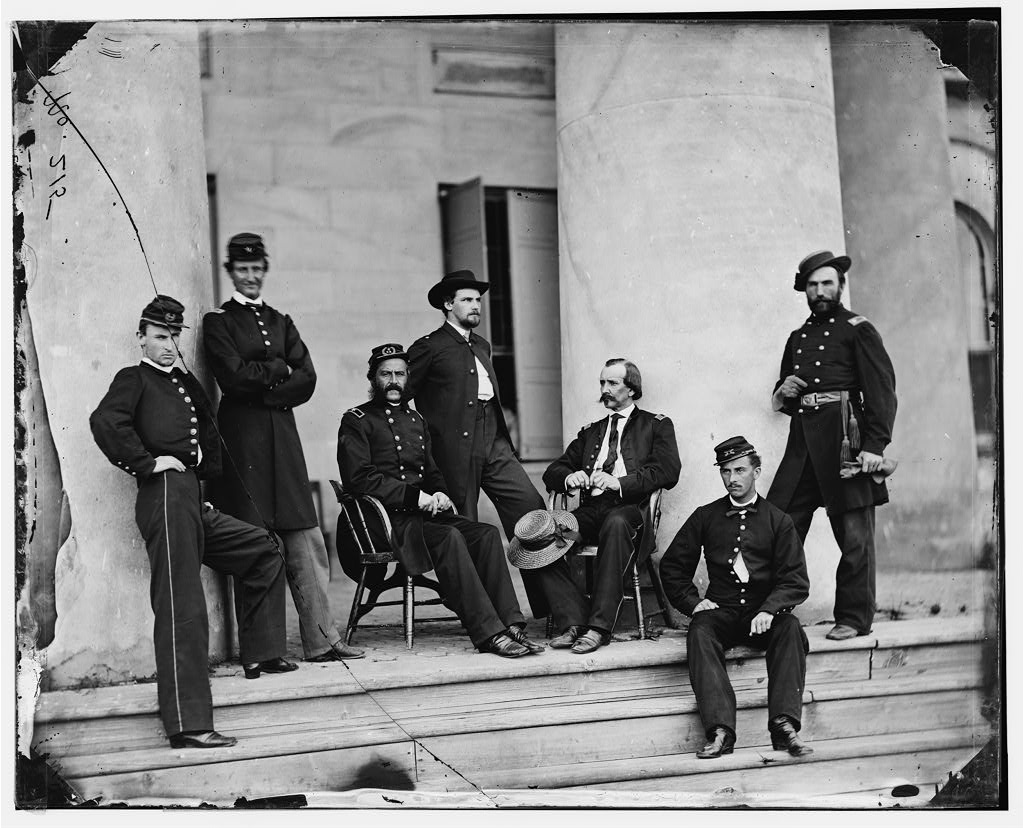 On May 24, 1861, in the wake of Virginia’s decision to secede from the Union, thousands of U.S. Army troops marched across the Potomac River to form a defensive perimeter around Washington, D.C. After the retreat from Manassas, efforts to fortify the area intensified. Describing the scene at Arlington in a letter to his wife, one Union soldier wrote: “I would like to draw you a picture of how it looks here, but I can't. But I will sum it up by saying desolation and ruin. There seems to be plenty of men, guns, cannon, music, horses, wagons, and mules and tents in sight, which is about all that can be seen…. The fences are gone and the country around here is all stumped over and trod down… Such is a short sketch of the place where I now live. Ain't it pleasant?” Mark H. Dunkelman, “Camp Seward on Arlington Heights: A Yankee Regiment’s First Stop in Dixie,” Arlington Historical Magazine 10, no. 2 (1994): 11.
On May 24, 1861, in the wake of Virginia’s decision to secede from the Union, thousands of U.S. Army troops marched across the Potomac River to form a defensive perimeter around Washington, D.C. After the retreat from Manassas, efforts to fortify the area intensified. Describing the scene at Arlington in a letter to his wife, one Union soldier wrote: “I would like to draw you a picture of how it looks here, but I can't. But I will sum it up by saying desolation and ruin. There seems to be plenty of men, guns, cannon, music, horses, wagons, and mules and tents in sight, which is about all that can be seen…. The fences are gone and the country around here is all stumped over and trod down… Such is a short sketch of the place where I now live. Ain't it pleasant?” Mark H. Dunkelman, “Camp Seward on Arlington Heights: A Yankee Regiment’s First Stop in Dixie,” Arlington Historical Magazine 10, no. 2 (1994): 11.
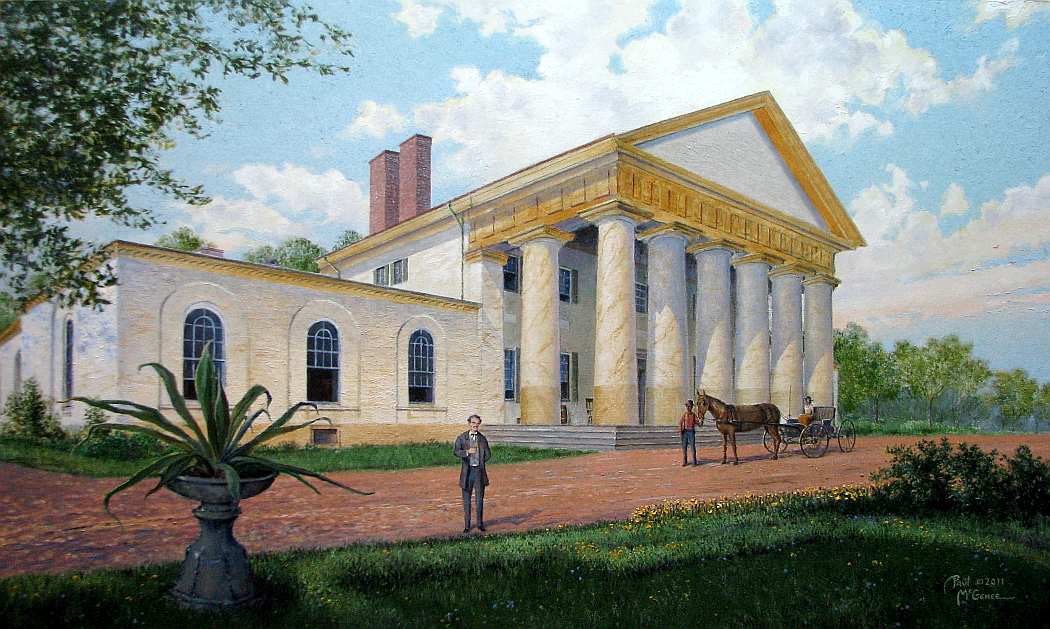
Robert E. Lee wrote in 1865, "This war, being at an end, the Southern States having laid down their arms, and the questions at issue between them and the Northern States having been decided, I believe it to be the duty of everyone to unite in the restoration of the country and the reestablishment of peace and harmony" and "our country will not only be restored in material prosperity, but will be advanced in science, in virtue and in religion."
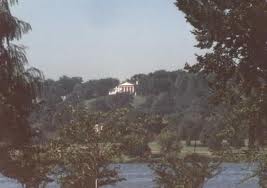 Arlington National Cemetery occupies just over half of the 1100 acres of the original Arlington plantation. Arlington National Cemetery was established by Brig. Gen. Montgomery C. Meigs, who commanded the garrison at Arlington House, appropriated the grounds June 15, 1864, for use as a military cemetery. A stone and masonry burial vault in the rose garden, 20 feet wide and 10 feet deep, and containing the remains of 1,800 Bull Run casualties, was among the first monuments to Union dead erected under Meigs' orders. Meigs himself was later buried within 100 yards of Arlington House with his wife, father and son; the final statement to his original order.
Arlington National Cemetery occupies just over half of the 1100 acres of the original Arlington plantation. Arlington National Cemetery was established by Brig. Gen. Montgomery C. Meigs, who commanded the garrison at Arlington House, appropriated the grounds June 15, 1864, for use as a military cemetery. A stone and masonry burial vault in the rose garden, 20 feet wide and 10 feet deep, and containing the remains of 1,800 Bull Run casualties, was among the first monuments to Union dead erected under Meigs' orders. Meigs himself was later buried within 100 yards of Arlington House with his wife, father and son; the final statement to his original order.
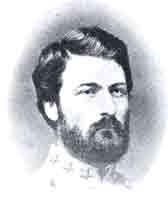 Following the death of his mother, in 1873, George Washington Custis Lee brought suit against the U.S. Government in hopes of gaining compensation for Arlington after its seizure from his mother for failing to pay her taxes in person in 1862. After a long court battle, the United States Supreme Court ruled that Custis was entitled to the property. Knowing that he could not live at Arlington and operate it as a plantation estate, he sold the title back to the U.S. Government for $150,000. Lee signed papers conveying the title on March 31, 1883, and Robert Todd Lincoln, secretary of war and son of President Lincoln, accepted title to the property for the government.
Following the death of his mother, in 1873, George Washington Custis Lee brought suit against the U.S. Government in hopes of gaining compensation for Arlington after its seizure from his mother for failing to pay her taxes in person in 1862. After a long court battle, the United States Supreme Court ruled that Custis was entitled to the property. Knowing that he could not live at Arlington and operate it as a plantation estate, he sold the title back to the U.S. Government for $150,000. Lee signed papers conveying the title on March 31, 1883, and Robert Todd Lincoln, secretary of war and son of President Lincoln, accepted title to the property for the government.
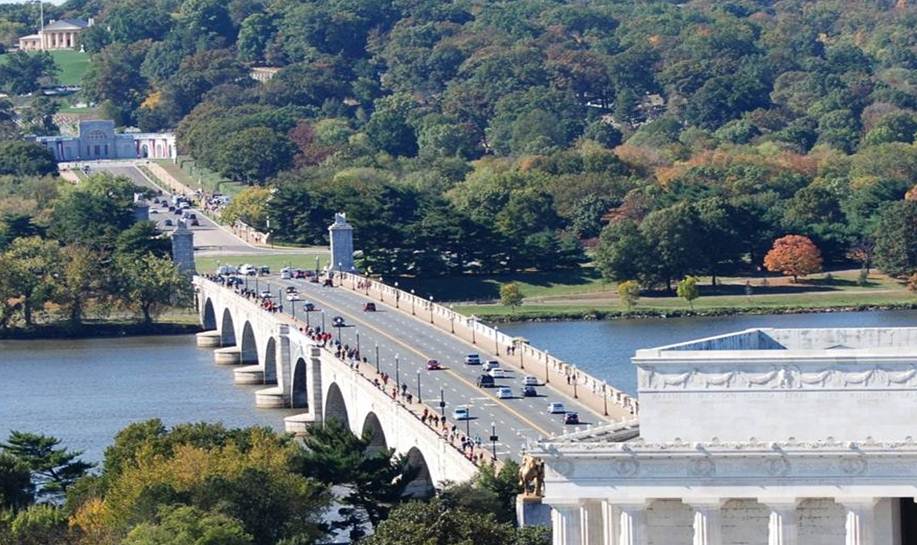 65 years after the end of Civil War, Arlington Memorial Bridge opened to traffic on May 6, 1932. Symbolically, the bridge was designed to show the strength of a united nation by joining memorials representing the Union (the Lincoln Memorial) and the Confederacy (the Robert E. Lee Memorial). The bridge spans the Potomac River, a physical and symbolic divider of the "North" and the "South" during the Civil War.
65 years after the end of Civil War, Arlington Memorial Bridge opened to traffic on May 6, 1932. Symbolically, the bridge was designed to show the strength of a united nation by joining memorials representing the Union (the Lincoln Memorial) and the Confederacy (the Robert E. Lee Memorial). The bridge spans the Potomac River, a physical and symbolic divider of the "North" and the "South" during the Civil War.
 President John F. Kennedy is buried at Arlington National Cemetery. His gravesite is down the hill below Arlington House. President Kennedy had made an unscheduled visit to tour Arlington House on March 3, 1963 and was taken by the story of a young National Park Service Ranger who explained that the Memorial Bridge was built to link the Lincoln Memorial with the Lee Custis Mansion, symbolizing the reunification of the nation. Kennedy enjoyed the story immensely, and looking across the river prophetically exclaimed, "I could stay here forever."
President John F. Kennedy is buried at Arlington National Cemetery. His gravesite is down the hill below Arlington House. President Kennedy had made an unscheduled visit to tour Arlington House on March 3, 1963 and was taken by the story of a young National Park Service Ranger who explained that the Memorial Bridge was built to link the Lincoln Memorial with the Lee Custis Mansion, symbolizing the reunification of the nation. Kennedy enjoyed the story immensely, and looking across the river prophetically exclaimed, "I could stay here forever."
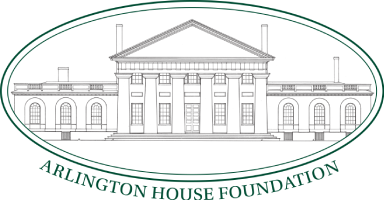
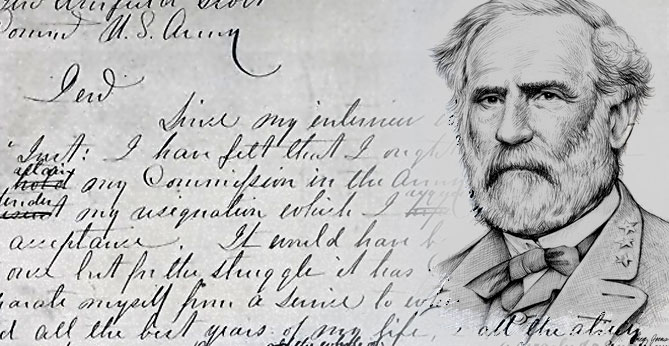
 On May 24, 1861, in the wake of Virginia’s decision to secede from the Union, thousands of U.S. Army troops marched across the Potomac River to form a defensive perimeter around Washington, D.C. After the retreat from Manassas, efforts to fortify the area intensified. Describing the scene at Arlington in a letter to his wife, one Union soldier wrote: “I would like to draw you a picture of how it looks here, but I can't. But I will sum it up by saying desolation and ruin. There seems to be plenty of men, guns, cannon, music, horses, wagons, and mules and tents in sight, which is about all that can be seen…. The fences are gone and the country around here is all stumped over and trod down… Such is a short sketch of the place where I now live. Ain't it pleasant?” Mark H. Dunkelman, “Camp Seward on Arlington Heights: A Yankee Regiment’s First Stop in Dixie,” Arlington Historical Magazine 10, no. 2 (1994): 11.
On May 24, 1861, in the wake of Virginia’s decision to secede from the Union, thousands of U.S. Army troops marched across the Potomac River to form a defensive perimeter around Washington, D.C. After the retreat from Manassas, efforts to fortify the area intensified. Describing the scene at Arlington in a letter to his wife, one Union soldier wrote: “I would like to draw you a picture of how it looks here, but I can't. But I will sum it up by saying desolation and ruin. There seems to be plenty of men, guns, cannon, music, horses, wagons, and mules and tents in sight, which is about all that can be seen…. The fences are gone and the country around here is all stumped over and trod down… Such is a short sketch of the place where I now live. Ain't it pleasant?” Mark H. Dunkelman, “Camp Seward on Arlington Heights: A Yankee Regiment’s First Stop in Dixie,” Arlington Historical Magazine 10, no. 2 (1994): 11.
 Arlington National Cemetery occupies just over half of the 1100 acres of the original Arlington plantation. Arlington National Cemetery was established by Brig. Gen. Montgomery C. Meigs, who commanded the garrison at Arlington House, appropriated the grounds June 15, 1864, for use as a military cemetery. A stone and masonry burial vault in the rose garden, 20 feet wide and 10 feet deep, and containing the remains of 1,800 Bull Run casualties, was among the first monuments to Union dead erected under Meigs' orders. Meigs himself was later buried within 100 yards of Arlington House with his wife, father and son; the final statement to his original order.
Arlington National Cemetery occupies just over half of the 1100 acres of the original Arlington plantation. Arlington National Cemetery was established by Brig. Gen. Montgomery C. Meigs, who commanded the garrison at Arlington House, appropriated the grounds June 15, 1864, for use as a military cemetery. A stone and masonry burial vault in the rose garden, 20 feet wide and 10 feet deep, and containing the remains of 1,800 Bull Run casualties, was among the first monuments to Union dead erected under Meigs' orders. Meigs himself was later buried within 100 yards of Arlington House with his wife, father and son; the final statement to his original order.  Following the death of his mother, in 1873, George Washington Custis Lee brought suit against the U.S. Government in hopes of gaining compensation for Arlington after its seizure from his mother for failing to pay her taxes in person in 1862. After a long court battle, the United States Supreme Court ruled that Custis was entitled to the property. Knowing that he could not live at Arlington and operate it as a plantation estate, he sold the title back to the U.S. Government for $150,000. Lee signed papers conveying the title on March 31, 1883, and Robert Todd Lincoln, secretary of war and son of President Lincoln, accepted title to the property for the government.
Following the death of his mother, in 1873, George Washington Custis Lee brought suit against the U.S. Government in hopes of gaining compensation for Arlington after its seizure from his mother for failing to pay her taxes in person in 1862. After a long court battle, the United States Supreme Court ruled that Custis was entitled to the property. Knowing that he could not live at Arlington and operate it as a plantation estate, he sold the title back to the U.S. Government for $150,000. Lee signed papers conveying the title on March 31, 1883, and Robert Todd Lincoln, secretary of war and son of President Lincoln, accepted title to the property for the government. 65 years after the end of Civil War, Arlington Memorial Bridge opened to traffic on May 6, 1932. Symbolically, the bridge was designed to show the strength of a united nation by joining memorials representing the Union (the Lincoln Memorial) and the Confederacy (the Robert E. Lee Memorial). The bridge spans the Potomac River, a physical and symbolic divider of the "North" and the "South" during the Civil War.
65 years after the end of Civil War, Arlington Memorial Bridge opened to traffic on May 6, 1932. Symbolically, the bridge was designed to show the strength of a united nation by joining memorials representing the Union (the Lincoln Memorial) and the Confederacy (the Robert E. Lee Memorial). The bridge spans the Potomac River, a physical and symbolic divider of the "North" and the "South" during the Civil War.  President John F. Kennedy is buried at Arlington National Cemetery. His gravesite is down the hill below Arlington House. President Kennedy had made an unscheduled visit to tour Arlington House on March 3, 1963 and was taken by the story of a young National Park Service Ranger who explained that the Memorial Bridge was built to link the Lincoln Memorial with the Lee Custis Mansion, symbolizing the reunification of the nation. Kennedy enjoyed the story immensely, and looking across the river prophetically exclaimed, "I could stay here forever."
President John F. Kennedy is buried at Arlington National Cemetery. His gravesite is down the hill below Arlington House. President Kennedy had made an unscheduled visit to tour Arlington House on March 3, 1963 and was taken by the story of a young National Park Service Ranger who explained that the Memorial Bridge was built to link the Lincoln Memorial with the Lee Custis Mansion, symbolizing the reunification of the nation. Kennedy enjoyed the story immensely, and looking across the river prophetically exclaimed, "I could stay here forever."